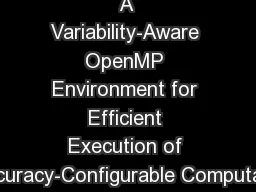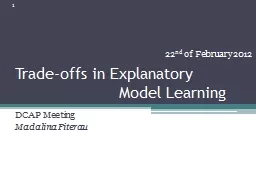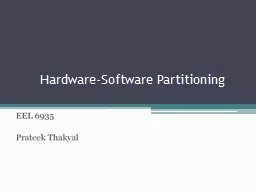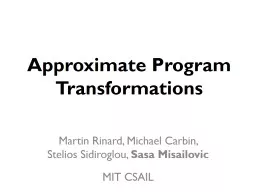PPT-A Variability-Aware OpenMP Environment for Efficient Execution of Accuracy-Configurable
Author : briana-ranney | Published Date : 2018-02-26
Abbas Rahimi Andrea Marongiu Rajesh K Gupta Luca Benini UC San Diego and University of Bologna Micreldeisuniboit MultiTherman variabilityorg Outline Introduction
Presentation Embed Code
Download Presentation
Download Presentation The PPT/PDF document "A Variability-Aware OpenMP Environment f..." is the property of its rightful owner. Permission is granted to download and print the materials on this website for personal, non-commercial use only, and to display it on your personal computer provided you do not modify the materials and that you retain all copyright notices contained in the materials. By downloading content from our website, you accept the terms of this agreement.
A Variability-Aware OpenMP Environment for Efficient Execution of Accuracy-Configurable: Transcript
Download Rules Of Document
"A Variability-Aware OpenMP Environment for Efficient Execution of Accuracy-Configurable"The content belongs to its owner. You may download and print it for personal use, without modification, and keep all copyright notices. By downloading, you agree to these terms.
Related Documents














